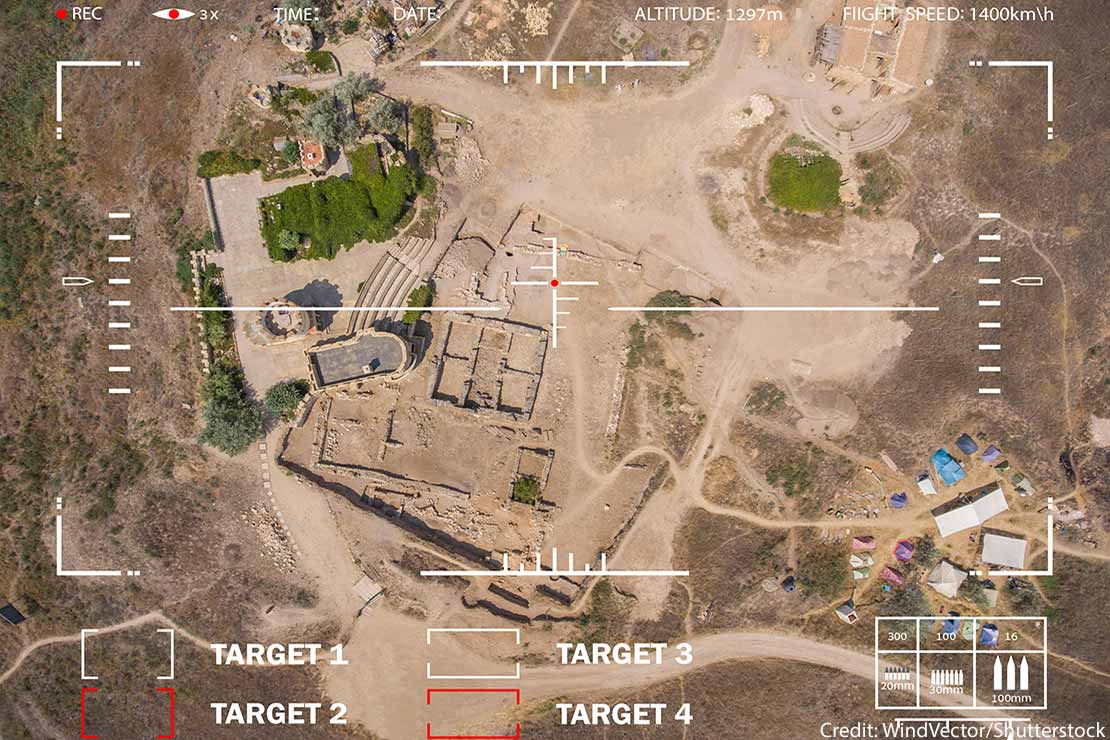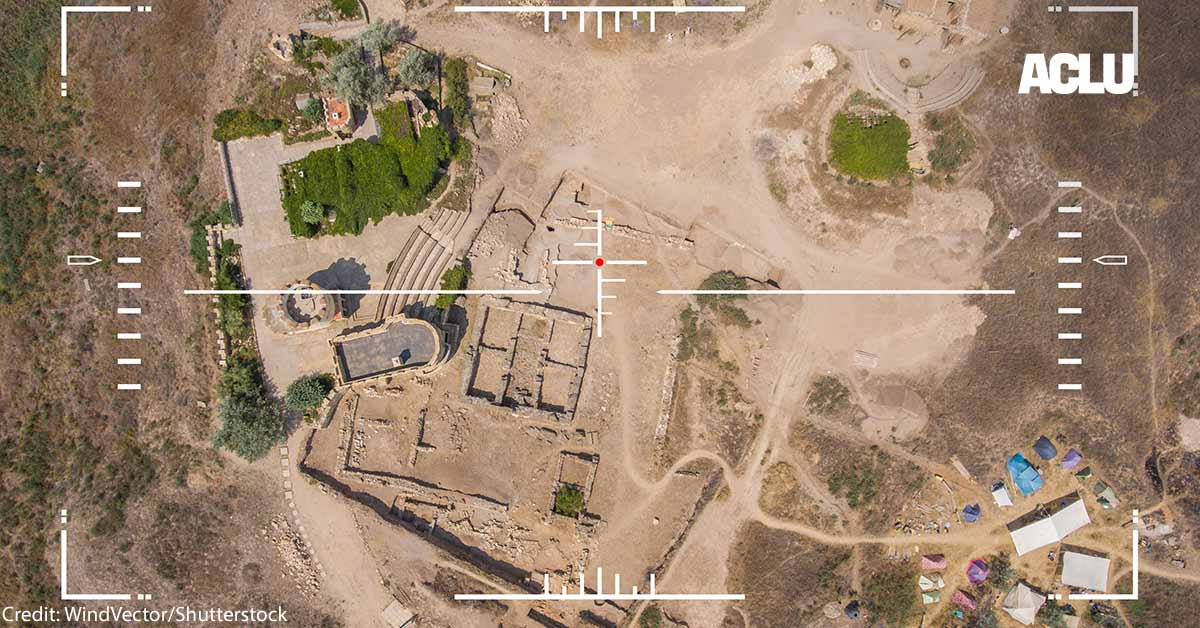This article was first published on Just Security.
On Friday night, in response to transparency lawsuits filed by the ACLU and the New York Times, the Biden administration released a redacted version of President Trump’s rules for the use of lethal force against terrorism suspects abroad. During the Trump administration, the Times and other media reported that the Trump rules weakened even the loose policy safeguards put in place by the Obama administration in 2013, which were also released in response to litigation in 2016. Despite redactions, the newly-revealed Trump rules show how far that administration went in casting aside any meaningful constraint on the United States’ use of lethal force abroad without meaningful oversight by Congress or the judiciary, and with devastating consequences for people’s lives.
Trump’s rules are in many ways an unsurprising extension of U.S. government logic and policy justifications for killing couched in legal language. Over now four administrations, the U.S. government has sought to justify an unlawful lethal strikes program that has exacted an appalling toll on Muslim, Brown, and Black civilians in different parts of the world. Now, almost 20 years into the U.S. government’s war-based approach, it’s clear that U.S. legal or policy justifications for this program do not actually demonstrate adherence to domestic or international law, they fundamentally undermine it.
Here are initial takeaways:
Message to Agencies: Lethal Force is Core to U.S. Strategy and Rules and Safeguards May Easily Be Cast Aside
From the outset, Trump’s Principles, Standards, and Procedures for U.S. Direct Action Against Terrorist Targets (PSP) is striking for the bellicose and nationalistic tone it sets and the message it sends to agencies involved in lethal operations. It starts by emphasizing flexibility to take “direct action”—a euphemism for lethal force as well as capture operations—as “a critical component” of U.S. counterterrorism strategy. It signals that heads of agencies have primary responsibility for proposing and taking these actions, and the president can swiftly give them more flexibility if they ask for it. It refers to “core principles” of the law of armed conflict, but in doing so, further transforms these legal rules that give states greater license to kill in the exceptional context of war into a blur of policy and preference that may, at the discretion of the president, apply outside of any recognizable battlefield. This is not new in assertions of unilateral authority by American presidents to kill in the last 20 years, but where President Obama sought to signal policy constraint, regulation, and layers of internal executive branch oversight for his killing rules, Trump explicitly signaled that the gloves were off to “further U.S. national security interests.”
To understand the Trump rules, it helps to understand what they changed, with the caveat that at least some of the redactions in the PSP likely hide important information, which could include further articulations of legal and policy positions, the role of agencies like the CIA, and procedures governing foreign governments’ involvement (or not) in lethal or capture operations.
By the end of the Obama administration, the U.S. government had established a policy and bureaucracy framework for use of lethal force against terrorism suspects that applied to “areas outside of active hostilities.” The Obama administration did not define “areas outside of active hostilities,” a term that has no basis in domestic or international law, but it was commonly understood to mean locations outside of recognized battlefields, where the laws of war clearly apply. Afghanistan, Iraq, and Syria were (and are) armed conflict zones, and the U.S. government asserted it would adhere to its law-of-war obligations in those conflicts. The Obama-era rules were understood to apply to the rest of the world, and more specifically, at various points, in Pakistan, Yemen, Somalia, and Libya.
For those “areas outside of active hostilities,” the Obama administration cobbled together a set of made-up rules that cherry-picked from a variety of legal frameworks that are intended to safeguard individual life and international peace and security—the laws of war, human rights law, and law governing states’ use of extraterritorial force in self-defense. In doing so, as rights groups, United Nations experts, and scholars have explained, the U.S. government has invoked war-based rules to permit killing that under international and domestic law is prohibited and constitutes extrajudicial execution. Even as it sought to justify unilateral executive use of lethal force, the Obama framework tried to impose policy limits based loosely on a combination of proxies for geographic scope, who could be killed, and with what precautions.
Perhaps most significantly, the Trump rules further scrambled—and surely created greater uncertainty about—what legal constraints applied where, and to whom. Unlike the Obama rules, the public PSP contains no mention of “areas outside of active hostilities.” The PSP doesn’t even bother referring to “affiliate forces” of ISIS or Al Qaeda in identifying potential targets of operations—rather, it refers to their purported networks “across the globe.” As a result, the Trump killing rules applied to all parts of the world outside the United States, including countries in which there is recognized armed conflict. With this sweeping application, the Trump rules may have destabilized the entire 20-year-old cobbled-together U.S. lethal force regime—and possibly set it up to further fail as a matter of law and practice. Like the Obama rules, the Trump rules authorized lethal strikes in countries where Congress has not authorized force and human rights law strictly prohibits extrajudicial killing. Unlike the Obama rules, the PSP applied to recognized conflicts, likely requiring commanders to obtain permission to apply humanitarian law, with its more permissive killing rules—or perhaps even act under a mix of the made-up rules.
The first Trump “Policy Standard” (Section 2A) authorizes use of force against any “terrorist group” against which the United States may “lawfully” use force and that is “engaged in ongoing hostilities” against the United States or pose a “continuing imminent threat.” This standard appears to be a loose articulation of authority to use force against a broad, unidentified range of unspecified groups. A later standard (Section 2G) reinforces the breadth of authority Trump claimed, asserting that the United States could use lethal force if “reasonably necessary to U.S. efforts to address the threat posed by” a terrorist group.
In other words, where international law generally only countenances use of force in the territory of another state in response to an “armed attack,” and the Obama administration stretched that concept to a “continuing and imminent threat,” the Trump rules further departed from law by allowing force in response to a mere “threat.” In doing so and despite the lip service the PSP pays to the requirements of international law, Trump could easily cast aside the fundamental U.N. Charter rules that are a cornerstone of international law and the international community’s means of protecting global peace and security.
The Obama rules also instructed the U.S. lethal force bureaucracy to account for other related important policy considerations in deciding to use lethal force: the sovereignty of states in whose territory strikes are carried out; considerations of consent by those states; whether a state was “unwilling or unable” to address threats. In this way, smart administration lawyers sought to advance technical arguments navigating the requirements of international humanitarian and human rights law and the U.N. Charter even as they fundamentally deviated from them. Smart scholars debated in these pages and elsewhere the efficacy and legality of the Obama frameworks and U.S. rules.
Trump easily did away with virtually all the policy constraints and scholarly debates. His rules glance at law, and lay bare how easily a president thinks it may be set aside in service of vague “national security interests.” It’s hard not to see these rules as a license to kill.
Measures to Protect Civilians and Prioritize Capture are Malleable
The Obama rules included a few measures to protect life and serve intelligence-gathering goals, such as a requirement of near certainty that no civilians would be harmed in the locations where the policy applied; a requirement of near certainty that a target actually was present at a strike location; and, a preference for capture instead of killing. These too, were easily set aside.
The Obama administration required “near certainty” that “non-combatants” would not be injured or killed, but nevertheless permitted exceptions to that (and other) policy standards (see Section 5B of the Obama Rules). The Trump rules repeat the near-certainty language (Section 2C) but do not include the requirement in a redacted Annex (Annex A) that sets out the minimal operating principles by which agencies must abide, again sending the signal that civilian life may be devalued. In the body of the PSP, agencies are told only to ensure “near certainty” with “reasonably available information and means of verification.” And as Charlie Savage reports, Biden administration officials discovered that Trump officials used the Trump rules’ latitude to kill men in some countries under a lower standard: “While it kept that [near certainty] rule for women and children, it permitted a lower standard of merely ‘reasonable certainty’ when it came to civilian adult men.”
The New York Times had reported that the Trump rules lowered the requirement of “near certainty” that a target would be present at a strike location to “reasonable certainty.” It appears that change was made in the relevant section of the Trump rules (Section 2B) but the Biden administration inexplicably has chosen to redact it, and it’s unclear how this redaction is at all justifiable.
The preference the Obama administration aimed to set for capture over killing is similarly watered down to the point of potential meaninglessness. The Obama rules required agencies to assess if capture would be feasible in their “operational plans”; the Trump rules express that capture is “general preferred,” and to be based on an extraordinarily low, discretionary, and vague standard of whether capture is “practical based on a risk analysis.” (Of note, the Obama rules asserted that in the event of capture, “in no event will additional detainees” be brought to Guantanamo; the PSP explicitly posits military commissions—currently only held at Guantanamo—as an option.)
Open-Ended Authorization to Kill
In short, the Trump rules served as open-ended authorization for the United States to kill virtually anyone it designates as a terrorist threat, anywhere in the world, without reference to the laws prohibiting extrajudicial killing under human rights law. The Trump rules may seem more extreme but in core ways they merely continue an unlawful U.S. extrajudicial killing program that is now a cornerstone of the “forever wars” that President Biden has pledged to end.
On his first day in office, President Biden suspended the Trump rules, and his administration then reportedly initiated a review and consideration of new policies, which was initially to take 60 days. It could now extend to 6 months, according to the New York Times. Meanwhile, although the president has announced the withdrawal of troops from Afghanistan by early September, Pentagon and other spokespersons have been careful to carve out the authority to launch remote lethal strikes regardless of the end of that conflict. This is a dangerous signal that the administration could be poised to repeat bad and harmful mistakes.
The U.S. lethal strikes program began under Bush and escalated under Obama and then Trump. The Obama administration prioritized flexibility and threat prevention, entrenching an architecture for a potentially global killing program with little transparency, no accountability, no meaningful public assessment of human and strategic costs and consequences, and a failure to properly consider the precedent it was setting. President Trump took what President Obama left, and did not have to do much to cast policy restraint aside. After all, just over a year ago, the Trump administration unilaterally took this country to the brink of conflict with Iran with the killing of Iranian General Qassem Soleimani. That’s in addition to his administration’s escalation of lethal strikes—and civilian deaths—in Yemen and Somalia.
Today, this country faces new domestic and global challenges in the form of climate change, the pandemic, mass displacement and migration—too often caused by conflicts our country has helped to unleash or sustain. President Biden has the opportunity to set a rights-promoting approach to foreign policy, including especially in the majority-Muslim countries in which people are devastated by U.S. lethal force without even acknowledgement or any accountability. If President Biden does not withdraw and disavow this country’s long-standing war-based approach to national security, his legacy could undermine our collective human security. The president can and should set the country on a new and necessary path.
Date
Wednesday, May 5, 2021 - 2:15pmFeatured image






